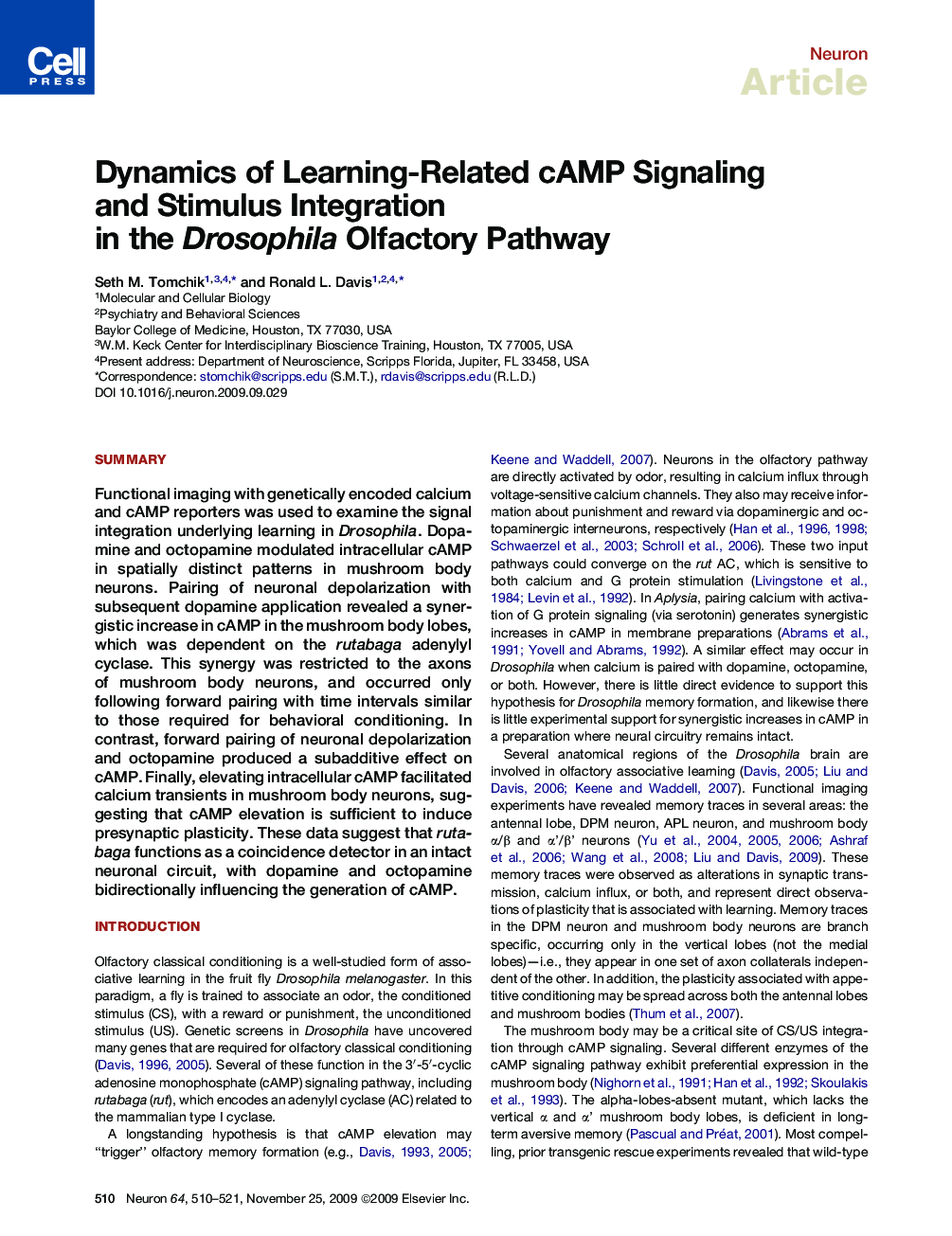| Article ID | Journal | Published Year | Pages | File Type |
|---|---|---|---|---|
| 4322067 | Neuron | 2009 | 12 Pages |
SummaryFunctional imaging with genetically encoded calcium and cAMP reporters was used to examine the signal integration underlying learning in Drosophila. Dopamine and octopamine modulated intracellular cAMP in spatially distinct patterns in mushroom body neurons. Pairing of neuronal depolarization with subsequent dopamine application revealed a synergistic increase in cAMP in the mushroom body lobes, which was dependent on the rutabaga adenylyl cyclase. This synergy was restricted to the axons of mushroom body neurons, and occurred only following forward pairing with time intervals similar to those required for behavioral conditioning. In contrast, forward pairing of neuronal depolarization and octopamine produced a subadditive effect on cAMP. Finally, elevating intracellular cAMP facilitated calcium transients in mushroom body neurons, suggesting that cAMP elevation is sufficient to induce presynaptic plasticity. These data suggest that rutabaga functions as a coincidence detector in an intact neuronal circuit, with dopamine and octopamine bidirectionally influencing the generation of cAMP.
